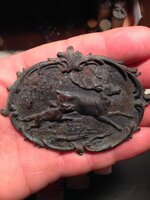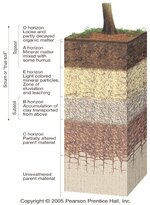Spizzerinctum
Full Member
- Mar 8, 2013
- 162
- 174
- Detector(s) used
- Bounty Hunter Tracker IV
- Primary Interest:
- All Treasure Hunting
My mother-in-law says there was a small community on her property (6-8 homes, store/gas station) in the early 1900s. In the 20s a big fire burned it all down. Her home was built in the 50s and she has almost an acre for her lawn. I've found some old stuff along with a lot of junk in her grass area where it has been tilled up over the years. I found an old flat clothes iron, several pieces of ornate, thick metal that may have been part of a pot-bellied stove and my favorite find - a belt buckle plate of an elk with a hound or wolf nipping its hindquarters. I have a cheap beginners detector that doesn't go very deep. I'd like to detect in the back part of her property where the ground has not been disturbed for all these years but how deep would treasure be after 80 to 90 years? This is western Oregon with much thick vegetation. Thanks for any advice!
Upvote
0







